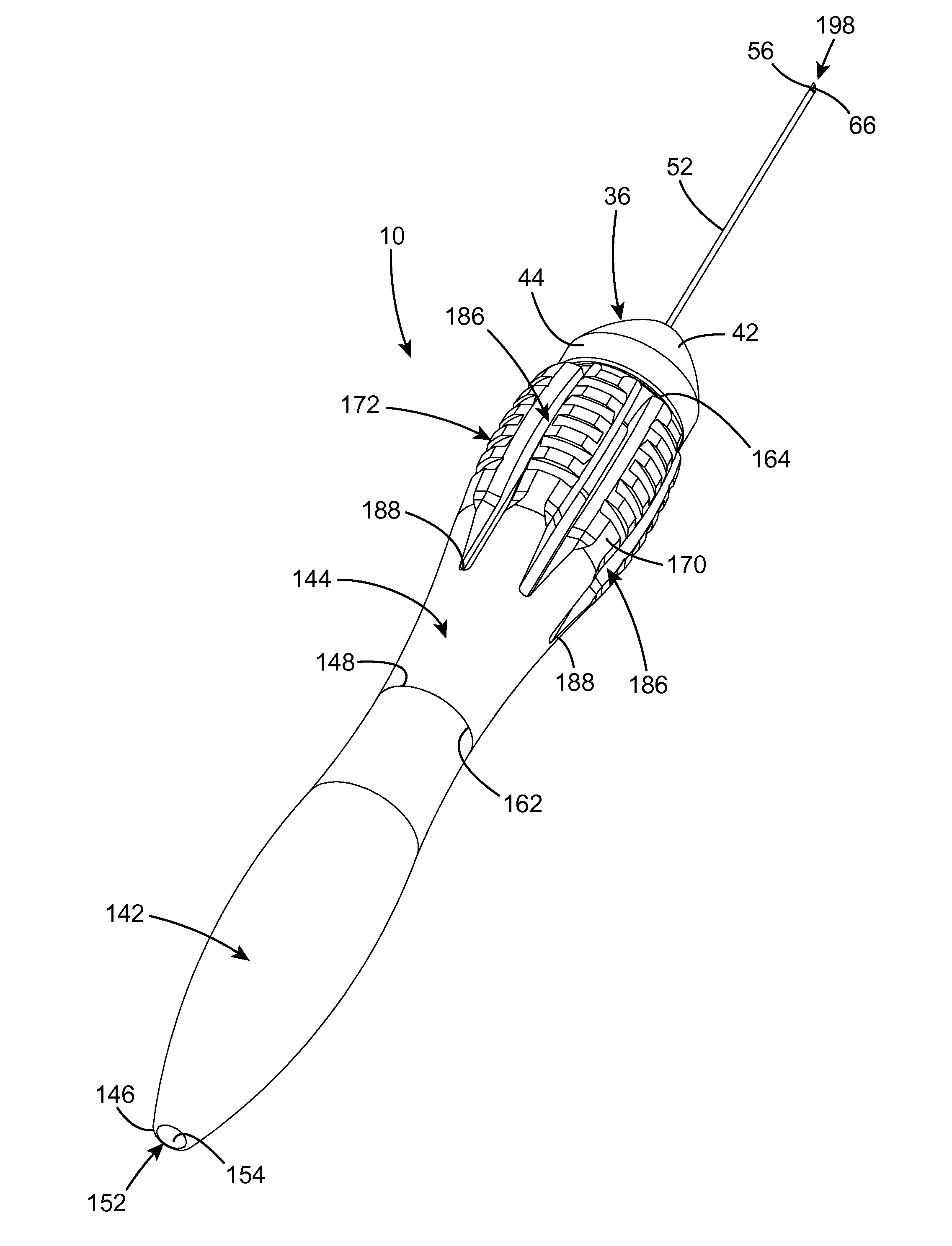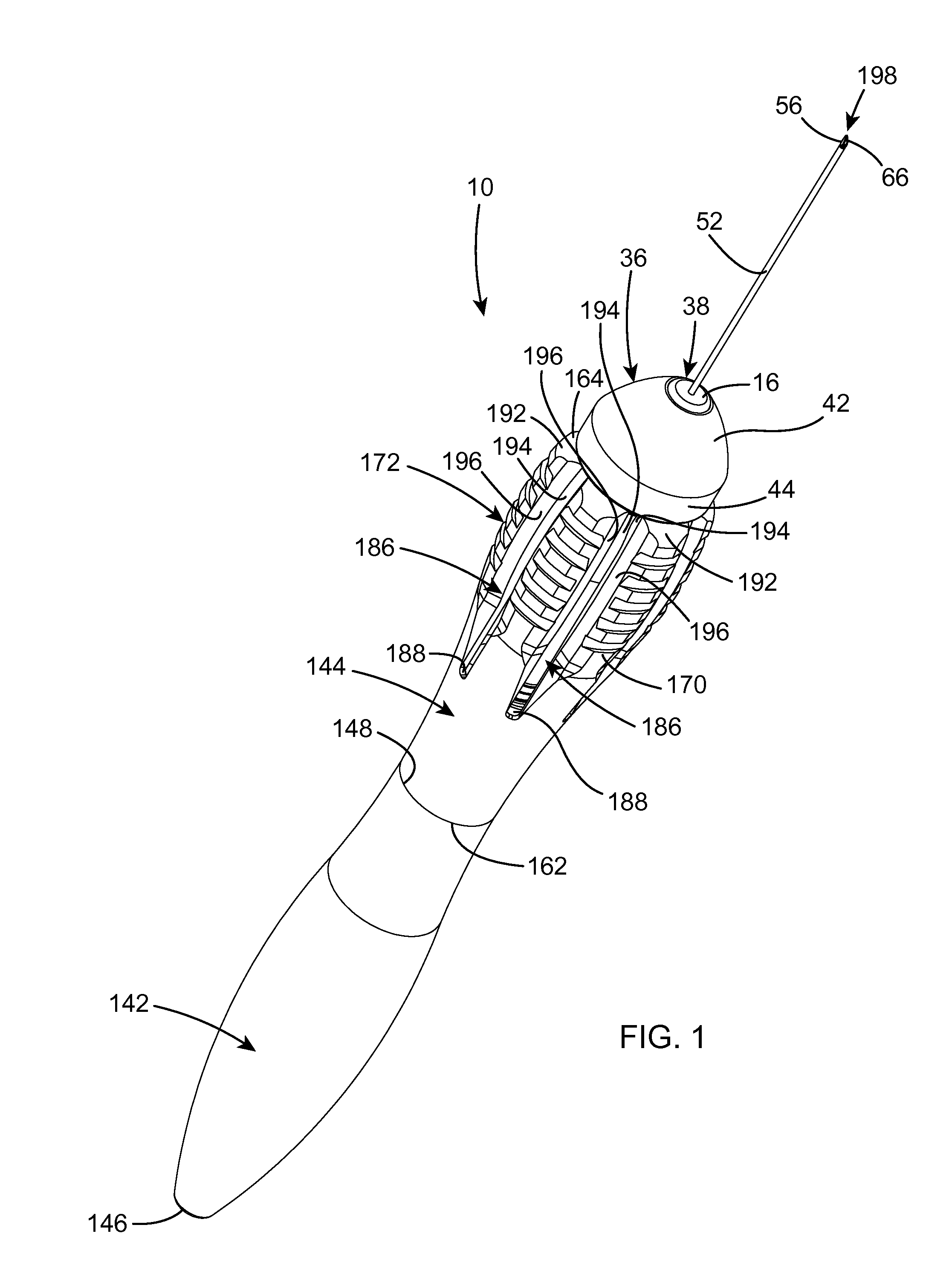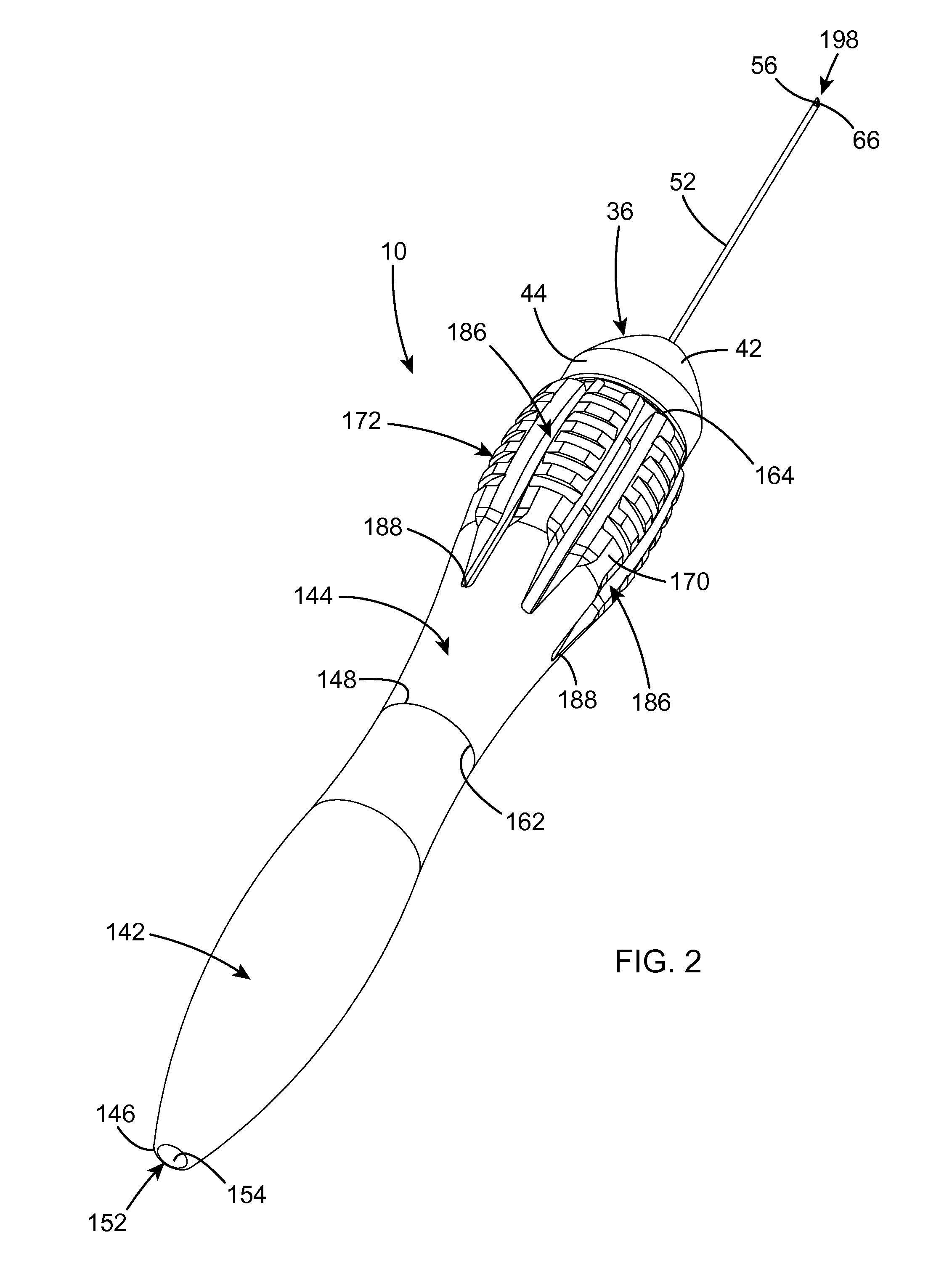Axially Reciprocating Microsurgical Instrument with Radially Compressed Actuator Handle
a microsurgical instrument and actuator handle technology, applied in the field of microsurgical instruments, can solve the problems of more complex construction of microsurgical instruments, and achieve the effect of reducing the resistance to the movement of the actuator of the surgical instrument, easy rotation or otherwise moved, and easy and comfortable operation
- Summary
- Abstract
- Description
- Claims
- Application Information
AI Technical Summary
Benefits of technology
Problems solved by technology
Method used
Image
Examples
Embodiment Construction
[0022]The microsurgical instrument of the present invention is operable to axially reciprocate a tube and shaft of a surgical instrument similar to the microsurgical instruments disclosed in U.S. Pat. No. 5,370,658 which is assigned to the assignee of this application and is incorporated herein by reference. In surgical instruments of this type a narrow, cylindrical shaft or fiber extends through a narrow tube and the shaft and tube are reciprocated relative to each other to produce relative movement between the operative microsurgical surfaces of the instrument. The shaft can move in reciprocating movements relative to a stationary tube, or the tube can move in reciprocating movements relative to a stationary shaft. As described in the above-referenced patent, those operative microsurgical surfaces can be the surfaces of a microsurgical instrument such as a scissors or forceps.
[0023]The microsurgical instrument 10 of the present invention is shown in a front perspective view in FIG...
PUM
 Login to View More
Login to View More Abstract
Description
Claims
Application Information
 Login to View More
Login to View More - R&D
- Intellectual Property
- Life Sciences
- Materials
- Tech Scout
- Unparalleled Data Quality
- Higher Quality Content
- 60% Fewer Hallucinations
Browse by: Latest US Patents, China's latest patents, Technical Efficacy Thesaurus, Application Domain, Technology Topic, Popular Technical Reports.
© 2025 PatSnap. All rights reserved.Legal|Privacy policy|Modern Slavery Act Transparency Statement|Sitemap|About US| Contact US: help@patsnap.com



